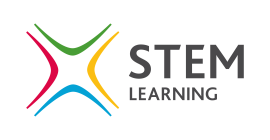- View more resources from this publisher
 National STEM Learning Centre and Network
National STEM Learning Centre and Network
Does STEM Enhance Cross-Curricular Learning within the Gifted and Talented Cohort at Key Stage Three?
Teachers often battle with students’ inability to make links between their learning across subjects. For example: in science, after collecting data from an experiment, students are required to draw a graph of their results and describe what the graph shows. As as soon as the graph paper is out students usually point out that it is a science lesson, not mathematics!
This problem is exacerbated by the difference in requirements for different subjects. For example, mathematics exams very rarely require students to be able to draw axes for graphs. However, science exams usually do. In the absence of collaboration between departments this difference may not be identified and staff assume incorrectly that students have been taught specific maths skills, which may ultimately be detrimental to their progress.
Teachers from the science and mathematics departments at Ashton-on-Mersey School collaborated on an after-school STEM club for Key Stage Three students that had been identified as Gifted and Talented in either subject.
They investigated whether the better use of cross-curricular links particularly across the STEM subjects could help to raise student attainment and also what impact this had on the teachers involved.
Show health and safety information
Please be aware that resources have been published on the website in the form that they were originally supplied. This means that procedures reflect general practice and standards applicable at the time resources were produced and cannot be assumed to be acceptable today. Website users are fully responsible for ensuring that any activity, including practical work, which they carry out is in accordance with current regulations related to health and safety and that an appropriate risk assessment has been carried out.




